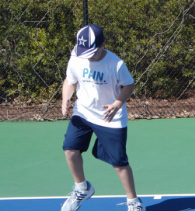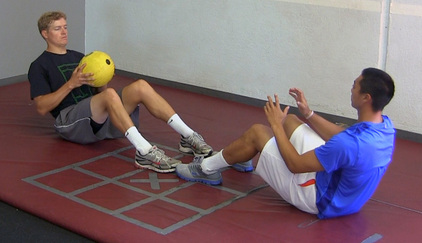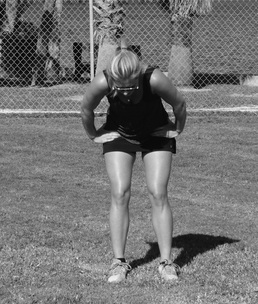|
Watch the below video by iTPA Certification Commissioner Dr. Don Chu on Myths Surrounding Young Athletes doing Plyometric Training. Current special on iTPA Plyometrics for Tennis DVD course: Through Sunday, August 4th, 2013, use coupon code Plyo and receive 20% off!
0 Comments
Watch the below video by iTPA Certification Commissioner Dr. Don Chu on Why Plyometric Training is so Important for Tennis Athletes. Also check out the Plyometrics for Tennis DVD course. During the summer months it is not uncommon for tennis athletes to play more than six hours of tennis in very hot conditions. Although playing in hot and humid weather is physically and mentally draining, here are 7 practical tips that can help any tennis athlete prepare to compete in hot and humid conditions. 1. Train hard before having to compete. Getting in fantastic physical shape before competing is one of the best methods to prepare for hot and humid conditions. Physically-fit athletes handle the hot and humid conditions better because they are able to consume and utilize more oxygen per breath, handle moderate increases in core temperature better and recover better between points. 2. Hydrate, hydrate, hydrate. Drinking high volumes of electrolyte-enhanced fluids will prepare the athlete and help limit the severe loss of fluids and electrolytes during play. Tennis is one of the toughest sports on the planet to maintain appropriate fluid levels during hot and humid conditions. Take precautions and train your body to consume appropriate amounts of fluid based on your sweat rate and body size. Unfortunately, as many as 50% of tournament players go into matches already dehydrated. 3. Consume sodium rich food and drink. Sodium is the major electrolyte lost in the sweat, and it is one factor that is related to an athlete’s likelihood of cramping. “Salty sweaters” have white residue that is left on dark-colored clothing or hats. This white residue is salt deposits released from the sweat. The higher the athlete’s salt concentration in the sweat, the more this white residue will show up on their apparel during and after a long match or practice session in hot and humid conditions. 4. A balanced diet is important for all athletes from a general performance standpoint and especially in regard to heat-related issues. 5. Wear sunscreen! Sunburn increases skin temperature and makes the body less efficient at body cooling. Most of us have been sunburned and had the feeling of heat dissipating from the skin. This process limits the amount of heat that will be moved from the core to the periphery (skin) and limits the ability to cool as efficiently as possible. 6. Acclimatization to the heat and humidity (7 to 14 days prior to competition). It is known that children take a longer period of time to acclimate to hot and humid conditions compared to adults. If it is practical, it is recommended to practice the week before a tournament in conditions that are similar to what the conditions will be like during the tournament. 7. Focus on tips 1 and 2 (train hard and stay well hydrated). These are two of the most important aspects of being able to compete effectively during the hot and humid summer months.
Watch the below iTPA video demonstrating and discussing the Overhead Squat Stability Progression. This is a rather simple exercise, but is an important exercise for tennis athletes as it helps to develop functional flexibility, strength and stability in the lower body as well as control of the muscles around the lower back and abdominals (core). All these factors are important for every tennis player. This movement should be taught to tennis players and if performed at least three days per week will provide a noticeable benefit in only a few weeks. It is recommended to add this movement to a weekly routine to improve and/or maintain stability and mobility. Performing 2-3 sets of 10-12 repetitions is recommended. As the athlete improves, greater range of motion can be attempted and even adding resistance may be appropriate for more advanced athletes. Speak to your Certified Tennis Performance Specialist (CTPS) for a personalized program and to develop a tennis-specific training program. |
iTPA Blog
The leader in tennis fitness, performance, education and tennis certification. Get iTPA Certified today! Categories
All
|
||||||||







 RSS Feed
RSS Feed
